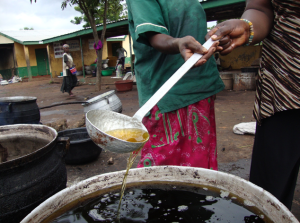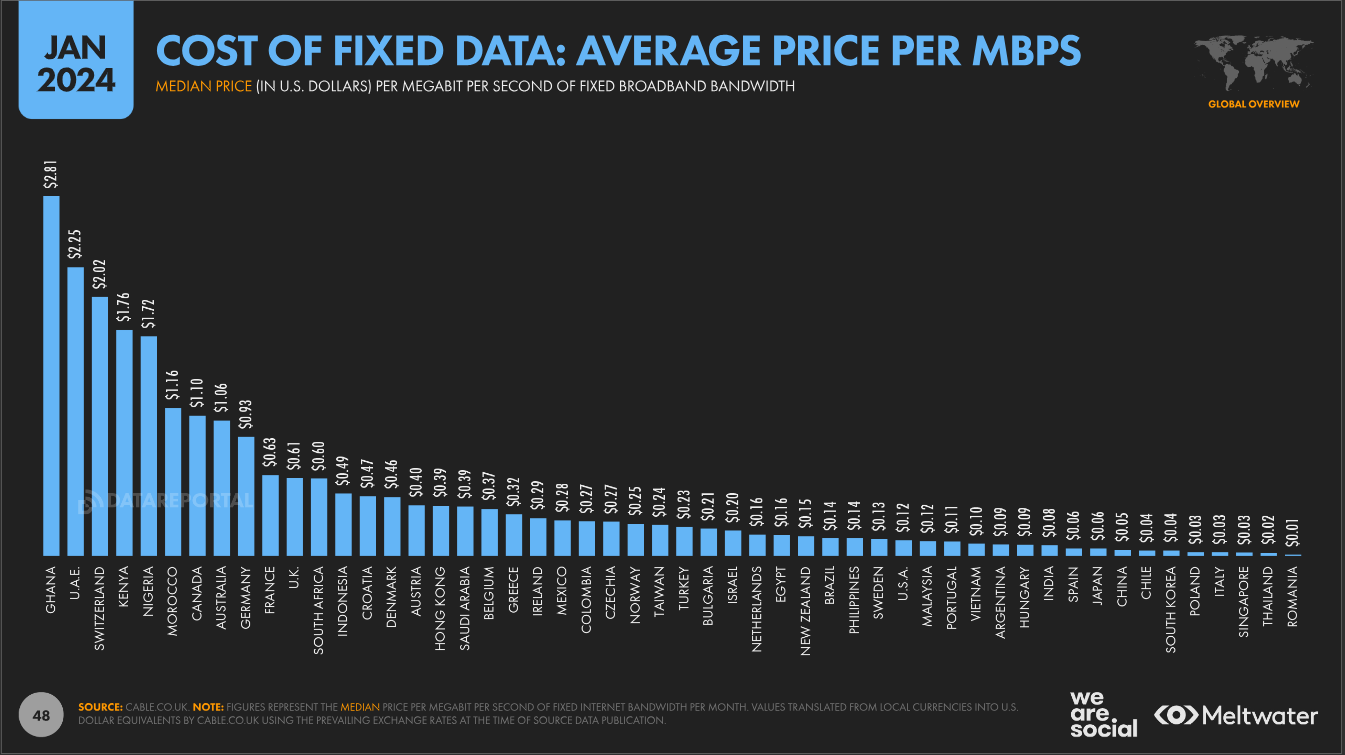
By Kingsley Webora TANKEH
Following the Tree Crops Development Authority’s (TCDA) price intervention that set a minimum producer price for shea nuts, some local shea processors are calling for a more transparent and consultative pricing regime.
They say a system that reflects market dynamics and protects the local industry is imperative, citing activities of middlemen and large multinational corporations that exploit lax enforcement to drive up prices and deprive local processors of supply.
They are also calling for an absolute ban on the export of raw shea nuts to stem an imminent shortage.
The TCDA set a minimum price for 1kg of raw shea nuts at GH¢9.01, effective July 1. This forms part of measures put in place by the authority to enhance sustainability, protect local producers and ensure international competitiveness within Ghana’s shea sector.
One bowl (olonka) equals 2.3kg, which with the new price will cost about GH¢20.70. A bag of 85kg will cost about GH¢765.63. The price is pegged with some quality specifications – including moisture content between 8 to 10 percent, free fatty acids between 6 to 8 percent and impurities ranging between 2 to 4 percent.
Even though the new price has now been implemented for two weeks, it is yet to reflect on the ground as opacity in the commodity’s pricing persist. One bowl of shea nuts is selling between GH¢20 to GH¢25 in the middle belt – Tamale and its environs.
The same bowl is being sold at GH¢40 in the country’s northernmost parts – Navrongo and Bolgatanga. This glaring lack of price harmony begs the question of enforcement. What is the TCDA doing in this regard?
The TCDA’s announcement comes on the heels of unheeded fervent calls for an absolute ban on the export of raw shea nuts to capitalise on what is the nation’s cultural heritage to gnaw a chunk of the US$2.7billion – expected to clock US$5.4billion by 2034 – global shea butter market. This has irked many industry players, who have decried lack of effective policies to stimulate growth in the sector and a lack of regulatory and enforcement mechanisms that leaves the sector at the mercy of unscrupulous middlemen and large-scale exporters.

Speaking exclusively to B&FT, the Manager of Maltiti Enterprise Limited – a local shea processor based in Tamale, Imoro Abu Kassim said it is early yet in the new crop season for such an intervention and outlined the new pricing model’s inadequacies – lack of flexibility, unspecified maximum price and lack of requisite tools to check the requirements.
He stressed that SMEs in the industry lack tools like moisture meters: “We don’t have moisture meters. It is not something we used to do. It is not going to be easy with our suppliers.”
Maltiti Enterprise Limited is a local shea butter producer in Tamale, with a production capacity of 150 metric tonnes per year. However, according to the facility’s manager production has been halted because they are facing challenges sourcing the kernels.
He revealed that he now produces only on order, as he is unable to source enough shea nuts to stock up for the dry season while maintaining regular shea butter production. He explained that sourcing kernels has become increasingly difficult due to limited capital and the activities of middlemen and multinational companies, which have driven prices up.
Mr. Kassim alleged that large-scale exporters purchasing raw shea nuts are contributing to the scarcity by colluding with middlemen to inflate prices: “The big players are driving prices up; they have teamed up with the middlemen and that’s what’s causing the problem”.
Amid ongoing price instability, Mr. Kassim expressed concern that the fixed pricing system could be detrimental without proper enforcement, adding that: “The fixed price is going to kill all of us if there’s no enforcement – these strong players are destroying the market”.
With prices continually influenced by middlemen and multinational corporations, the local shea industry’s survival hangs in the balance.
Mr. Kassim noted that persistent price instability undermines effective planning. “You negotiate based on the market price, then they stretch you. You can’t go back and renegotiate,” he added.
Some stakeholders in the shea value chain have also expressed scepticism about the price intervention’s effectiveness. The founder of Right Shea Group, a local shea butter producer in northern Ghana, Ibrahim Jabir Mohammed said: “Let’s wait and see how it reflects in the market, because setting the price alone doesn’t solve all the problems. It is just solving 30 percent of the problems. The real issue is not about pricing the nuts but exporting raw nuts without value addition.”
Burkina Faso, Mali, Ghana, Nigeria and Cote d’Ivoire collectively produce about 70 percent of the global shea nut output. Burkina Faso and Mali’s effective ban on the export of raw shea nuts, effective last year, further exacerbated the situation – stretching Ghana’s production output. Ghana now balances supplying local processors and meeting the export demand this situation has created.
Consequently, the demand for shea nuts went off the roof last year – forcing some local processors to fold-up due to the shortage of the kernels. “That’s what usually results with high pricing. The system is not really that organised. It is difficult. There are still loopholes that people go through to buy the nuts at higher prices and make it scarce for people who can’t afford those prices.”
This behaviour impacts local production and sale of shea butter in and outside the country, since it renders local processors uncompetitive – high production costs and very thin profit margins. “I produce 30 to 35 tonnes of shea butter every month with the clients and processing capacity I have. We can involve more cooperatives or more women to process and increase the output, if need be,” he said.
However, the perennial shea nut shortage toward the end of October through to January continues to bite local processors hard. This renders a lot of these processing centres’ employees, especially vulnerable women, unemployed.
“As early as November last year, we had to shut down because there was massive shortage of nuts,” Mr. Mohammed shared.
Last year, the price of a bowl of shea nuts clocked GH¢70 before depleting completely. “However, this year we are having a good yield. But I don’t think it will be enough to control the shortage,” Mr. Mohammed said, not ruling out an imminent shortage and stressing that Mali and Burkina Faso’s ban will “create a lot of pressure on the Ghanaian market”.
“Generally, output from the shea trees is not even enough. If you look at what we are picking now and considering the local processors we have, output from the trees will not be enough to supply local industries let alone export. I foresee some shortage in the coming months,” concurred the Director-West African Centre for Shea Innovation and Research, University for Development Studies, Prof. Bukari Alhassan.
This imminent crisis stems from a dismal fruiting season last year and early 2025 hopes of abundant fruit-yield, which were dashed by a devastating windstorm during flowering. “It flowered very well. Unfortunately, some windstorm came and destroyed a lot of it. So, I’m sure that is why we are getting these low numbers again,” said the manager of Maltiti Enterprise Limited, Mr. Kassim.
This compounds the shea tree’s natural irregular fruiting cycles, creating chronic instability. Shea trees fruit once in a year, contingent on so many factors including rainfall, wind and the impact of climate.
While regulation 50 of the Tree Crops Regulations 2023 (L.I. 2471) mandates that all exporters of unprocessed shea nuts, cashew and rubber must secure an export permit from the TCDA and provide proof of development levies payment before they can obtain a phytosanitary certificate from the Plant Protection and Regulatory Services Directorate, it does not spell out an absolute ban on the export of raw shea nuts.
Mr. Kassim therefore strongly advocated for an absolute ban on raw exports to ensure all-year-round availability of the kernels, citing success in Burkina Faso and Mali. “We support it fully. They are buying their butter. It is creating a lot of employment. But here, it is not like that,” alluding to Ghana’s porous ‘conditional’ ban allowing exporters to circumvent the restrictions.
However, the local shea industry’s bane, according to Mr. Kassim, is the prohibitive cost of capital. Considering Maltiti Enterprise Limited’s 150 metric-tonne yearly shea butter output, it requires stockpiling over 100 metric tonnes of shea nuts but lack of affordable finance poses a challenge. “Our problem is not just with the price but also funds to buy is a problem. You go to a bank and the interest rate is so high.”
Lending rates in Ghana hover at around 30 percent, making access to finance unsustainable for these small local processors. This fundamentally undermines value addition and creates room for foreign competitors, who access capital at rates as low as 3-5 percent, to forage for all the nuts. “If somebody takes a loan at 5 percent and you are taking it at 30 percent, can you compete with the system? It is going to be extremely difficult,” Mr. Kassim declared.
He is therefore calling for holistic support rather than only focusing on the price, which is one side of the puzzle. Mr. Kassim is calling for a strategic shift in government focus. He urged government intervention to provide affordable finance through dedicated low-interest loan schemes – so local shea processors will be able to stock up for the dry season. “The regulation of price should not be the only thing. I think the financing aspect is what government should work on more.”
Some experts believe with the right enforcement price intervention is a step in the right direction and will bring sanity to the local shea industry. Prof. Bukari Alhassan acknowledged the fact that “measuring moisture content is very difficult for them at this very moment”. However, despite these challenges, he said “it is a significant milestone” – stressing that “it is going to protect the vulnerable women doing the picking”.
“These vulnerable women are exposed to so many hazards. They go into the hinterland to do the picking and at the end of the day, the returns they get is not worth it. But now the minimum floor-price is meant to solve this problem. I am sure by next year things will have been streamlined much better so that ordinary women – the poor women at the village, at the hinterlands – can get the benefit they are supposed to in order for them to cater for their families.”
Prof. Alhassan is urging government to resource the TCDA, expand its human resource capacity and assist with logistics to enable monitoring activities of the multinationals. “Government is supposed to empower the TCDA to set up some law enforcement agencies to make sure these these price regulations are enforced along with monitoring the activities of these foreign multinationals – reporting any wrongdoing to the authority for appropriate sanctions to be taken,” he added.
Mr. Kassim however emphasised the need for supplier education and a double-edged pricing model that also regulates the price of shea butter price, to safeguard both the pickers and entire value chain. “Government should work on both the collection side and the final product.”
July has been declared globally as shea month to celebrate its enormous contribution to the development of countries and protection of vulnerable groups, especially women that depend on the commodity for their livelihoods.
The post Fixed prices for shea nuts not enough -Industry players appeared first on The Business & Financial Times.
Read Full Story


















Facebook
Twitter
Pinterest
Instagram
Google+
YouTube
LinkedIn
RSS